2.741 words, 15 minutes read time.
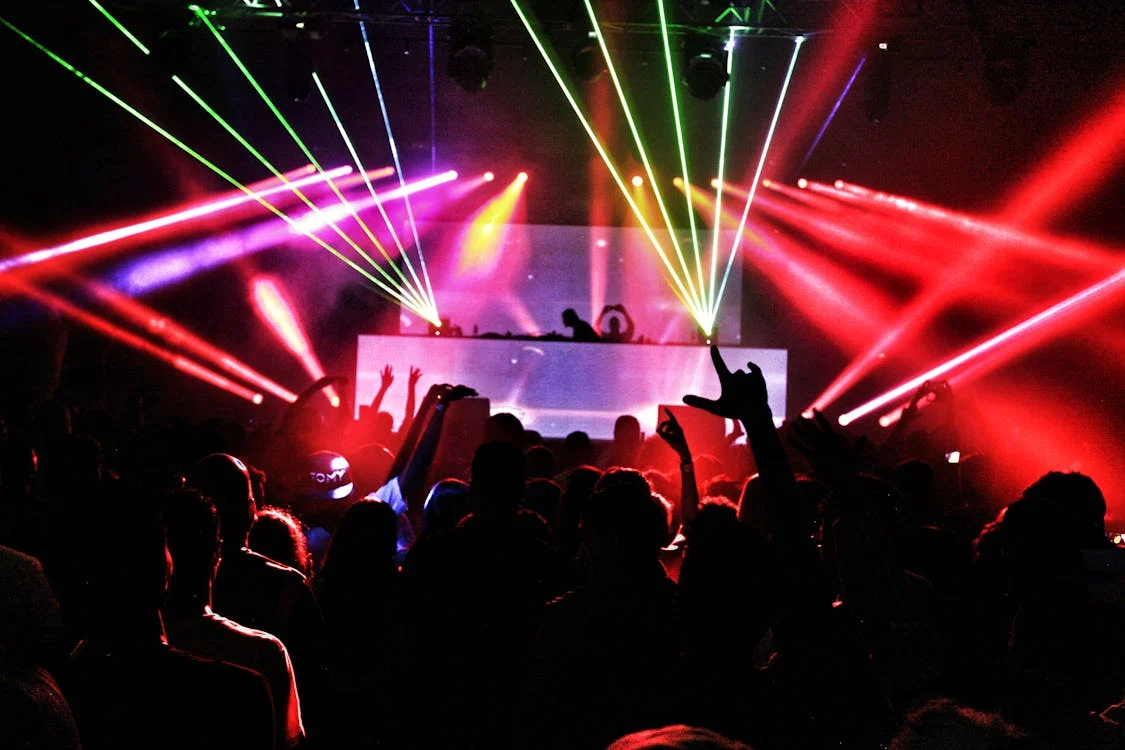
What is Hard Techno? A Quick Definition
Hard Techno is a subgenre of techno characterized by fast tempos, typically 140-160 BPM, and raw, industrial-inspired sounds. Known for its aggressive beats and relentless energy, it originated in 1990s Europe and remains popular in underground scenes and festivals, appealing to fans of intense, high-energy electronic music.
Quick Overview
In this guide for “What is Hard Techno?”, we’ll explore everything you need to know about Hard Techno, including:
- The origins and evolution of Hard Techno in What is Hard Techno?.
- Its defining characteristics and unique sound.
- Key artists who shaped the genre.
- The culture, scene, and global impact.
Plus, don’t miss our tips for diving into the world of Hard Techno in What is Hard Techno?!
Table of Contents for What is Hard Techno?
Introduction: What is Hard Techno?
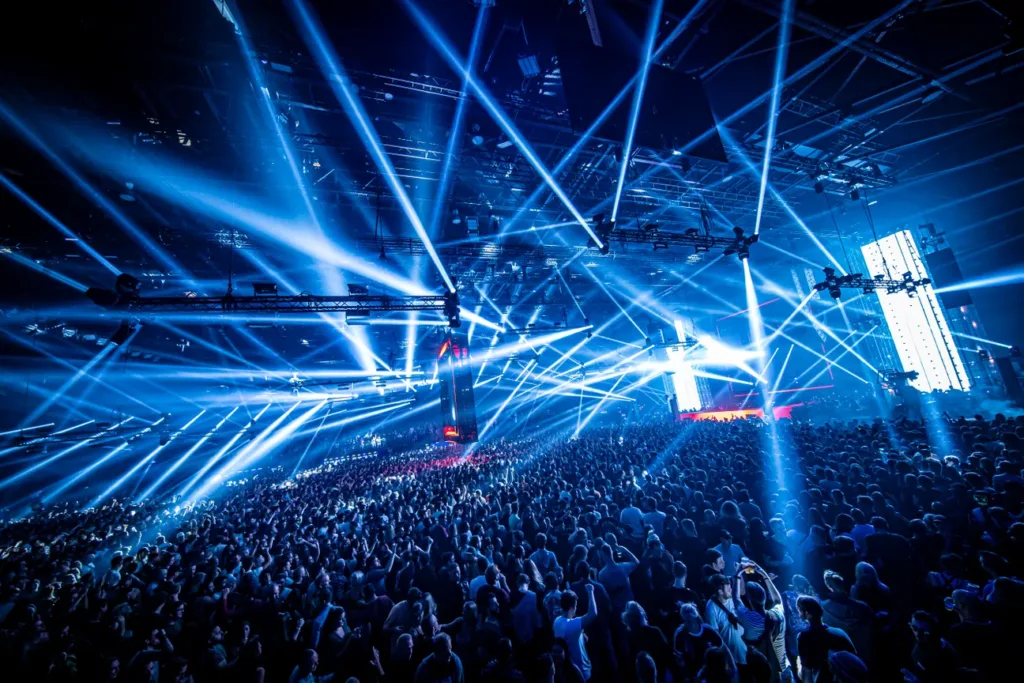
What is Hard Techno? Ever felt your heart pound in sync with a beat so intense it seems to take over your entire being? That’s the raw power of hard techno. More than just music, hard techno is an experience—a relentless journey through aggressive beats, dark atmospheres, and energy that’s nothing short of infectious.
As a subgenre of techno, hard techno pushes the boundaries of speed and intensity, offering an adrenaline rush that keeps fans coming back for more. But what exactly sets hard techno apart from other electronic music genres? Let’s dive deep into the world of hard techno to uncover its origins, characteristics, and the culture that fuels its unstoppable momentum.
The Origins of Hard Techno
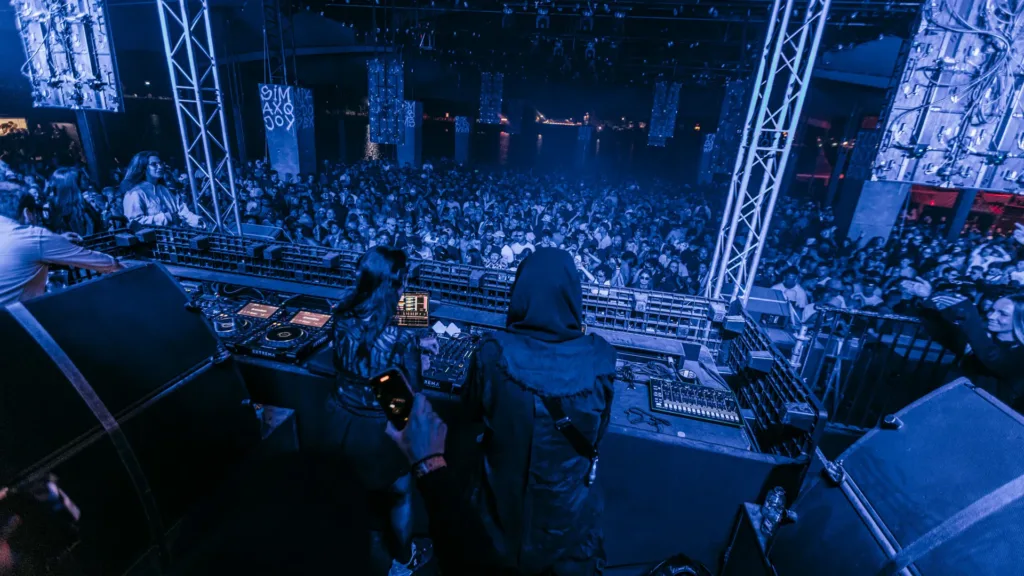
The story of hard techno begins in the late 1990s and early 2000s, a period of explosive growth and experimentation within the electronic music scene. While techno had already established itself with hypnotic rhythms and futuristic sounds, artists sought to explore its heavier, more aggressive potential.
Influential Genres and Movements
- Hardcore Techno and Gabber: Originating from the Netherlands, these genres were characterized by fast tempos and distorted kicks, significantly influencing what hard techno is today.
- Industrial Techno: With its mechanical sounds and dystopian themes, industrial techno contributed to hard techno’s raw and uncompromising aesthetic.
- Schranz: A term coined by Chris Liebing, schranz represents a harder, faster style of techno that laid the groundwork for hard techno.
Pioneering Artists
Artists like Chris Liebing, DJ Rush, and later Amelie Lens and Paula Temple, began pushing techno’s limits. They embraced higher BPMs, heavier basslines, and darker themes, giving birth to a sound that was both exhilarating and intense.
“We wanted to create something that was a true expression of energy and emotion—a sound that people could lose themselves in.”
— Chris Liebing
Characteristics of Hard Techno

What is Hard Techno and what makes it instantly recognizable? Here are its defining features:
High BPM (Beats Per Minute)
- Tempo Range: Typically between 150 to 160+ BPM.
- Impact: Creates an unrelenting pace that drives the dancefloor into a frenzy.
Aggressive and Driving Sound
- Heavy Kick Drums: Powerful kicks that hit hard and deep.
- Dark Synths: Utilizes sinister melodies and tones.
- Layered Percussion: Complex rhythms that add to the intensity.
Industrial and Mechanical Influences
- Distorted Sounds: Incorporates noise elements and distortion.
- Mechanical Rhythms: Rhythms that mimic industrial machinery.
- Harsh Textures: Creates a raw, edgy atmosphere.
Atmospheric Elements
- Minimal Vocals: Focuses on instrumental prowess.
- Dark Themes: Explores themes of dystopia, rebellion, and raw human emotion.
- Immersive Experience: Aims to engulf the listener entirely.
Hard Techno vs. Other Genres: More Than Just BPM
When exploring the landscape of electronic dance music (EDM), genres like Hardstyle, Dubstep, Hardcore, Techno, and Hard Techno each present distinct characteristics that set them apart. What is Hard Techno compared to other genres:
Hardstyle:
- Tempo: Typically around 150 BPM.
- Sound Design: Features overdriven, hard-sounding kick drums, often accompanied by an offbeat bassline.
- Melodic Elements: Incorporates uplifting melodies and anthemic choruses, creating an emotional and euphoric atmosphere.
- Origins: Emerged in the late 1990s in the Netherlands, Belgium, and Italy, blending influences from techno, new beat, and hardcore. Wikipedia
Dubstep:
- Tempo: Generally around 140 BPM.
- Sound Design: Known for prominent wobbling basslines and heavy use of sub-bass frequencies.
- Rhythmic Patterns: Features half-time rhythms, giving a slower feel despite the moderate tempo.
- Origins: Developed in the late 1990s in South London, evolving from UK garage and incorporating elements of drum and bass, jungle, and dub reggae.
Hardcore:
- Tempo: Ranges from 160 to over 200 BPM.
- Sound Design: Characterized by heavily distorted kicks, aggressive synths, and often dark or abrasive themes.
- Subgenres: Includes variations like Gabber, Frenchcore, and Speedcore, each with unique elements.
- Origins: Emerged in the late 1980s and early 1990s in Europe, particularly in the Netherlands, as an evolution of the rave scene. 6AM Group
Techno:
- Tempo: Typically between 120-130 BPM.
- Sound Design: Focuses on repetitive, instrumental tracks with an emphasis on rhythm and groove over melody.
- Structure: Often minimalistic, designed for continuous DJ sets.
- Origins: Originated in the mid-1980s in Detroit, USA, as a fusion of electronic music and African-American styles.
Hard Techno:
- Tempo: Generally between 140-160 BPM.
- Sound Design: Emphasizes raw, industrial sounds with a focus on minimalism and repetition, creating a hypnotic and immersive atmosphere.
- Energy: Delivers relentless energy with less emphasis on melody, concentrating more on textures and atmosphere.
- Origins: Evolved from Techno, incorporating elements of Hardcore to create a more intense sound.
In summary, while these genres share a common electronic foundation, they diverge significantly in tempo, sound design, rhythmic structure, and cultural origins, offering diverse experiences within the EDM spectrum.
Hard Techno vs. Other Techno Subgenres
Understanding Hard Techno within the broader techno landscape helps highlight its unique qualities.
Hard Techno vs. Minimal Techno
- Minimal Techno: Emphasizes simplicity, subtlety, and space within tracks.
- Hard Techno: Favors complexity, layering, and an aggressive sound.
Hard Techno vs. Industrial Techno
- Industrial Techno: Shares mechanical sounds but often has a slower tempo and experimental approach.
- Hard Techno: Faster-paced with a focus on driving rhythms and dancefloor energy.
Hard Techno vs. Melodic Techno
- Melodic Techno: Centers around emotive melodies and atmospheric soundscapes.
- Hard Techno: Prioritizes raw power and intensity over melody.
Key Artists and Labels in Hard Techno
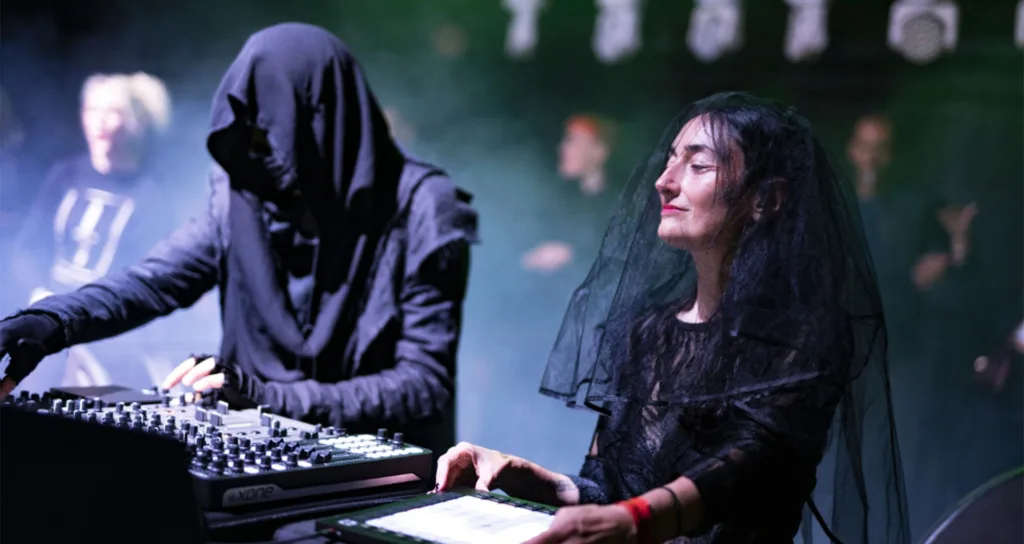
The hard techno scene thrives thanks to passionate artists and labels dedicated to pushing the genre forward.
Influential Artists
- Paula Temple: Known for her innovative productions and intense live sets.
- Nico Moreno: Brings a fresh perspective with hard-hitting tracks and dynamic performances.
- I Hate Models: Fuses emotion with aggression, creating a unique soundscape.
- Amelie Lens: A powerhouse in the techno scene, her sets often venture into hard techno territory.
Pioneering Labels
- Kne’ Deep: Founded by DJ Rush, focuses on hard techno and schranz.
- RAW: Dedicated to releasing cutting-edge hard techno tracks.
- Possession: A label and event series known for its underground ethos and support of emerging talent.
Rising Stars
- Stan Christ: Blends classic hard techno elements with modern production.
- Héctor Oaks: Brings a gritty edge to his productions and DJ sets.
- SPFDJ: Known for energetic performances that captivate audiences.
The Culture and Scene of Hard Techno
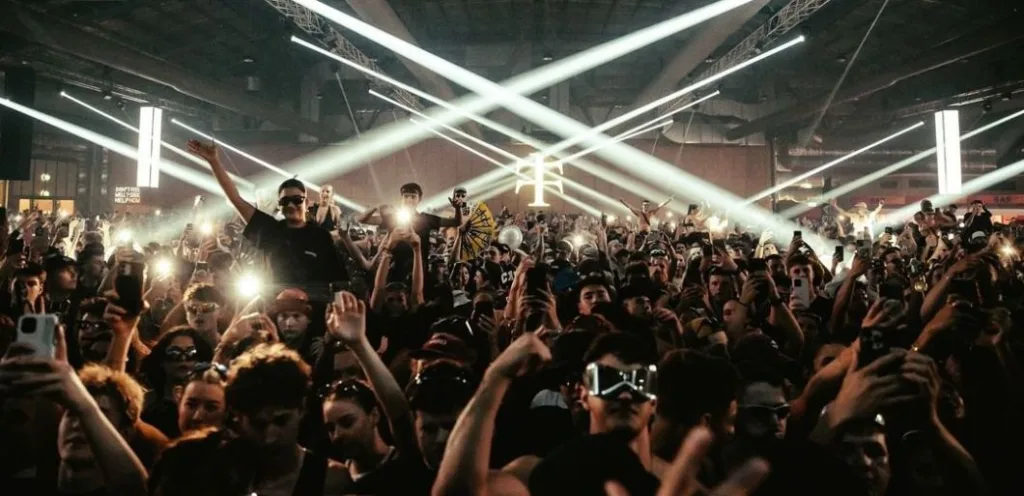
Community and Connection
The hard techno community is a tight-knit group of enthusiasts who share a passion for intense music and underground culture.
- Unity: Fans often describe a strong sense of belonging at events.
- Inclusivity: The scene prides itself on being open and welcoming to all. Like answering questions like “What is Hard Techno?”
Events and Festivals
- Verknipt Festival: Held in the Netherlands, it’s a haven for hard techno fans.
- Teletech: Known for its cutting-edge lineups and immersive experiences.
- Awakenings: While featuring various techno styles, it often includes hard techno artists.
Fashion and Aesthetics
- Dark and Edgy Style: Black clothing, leather, and industrial accessories are common.
- Practical Attire: Fans opt for comfortable clothing suitable for hours of dancing.
- Self-Expression: Fashion is a form of personal expression within the scene.
Experiencing a Hard Techno Live Set
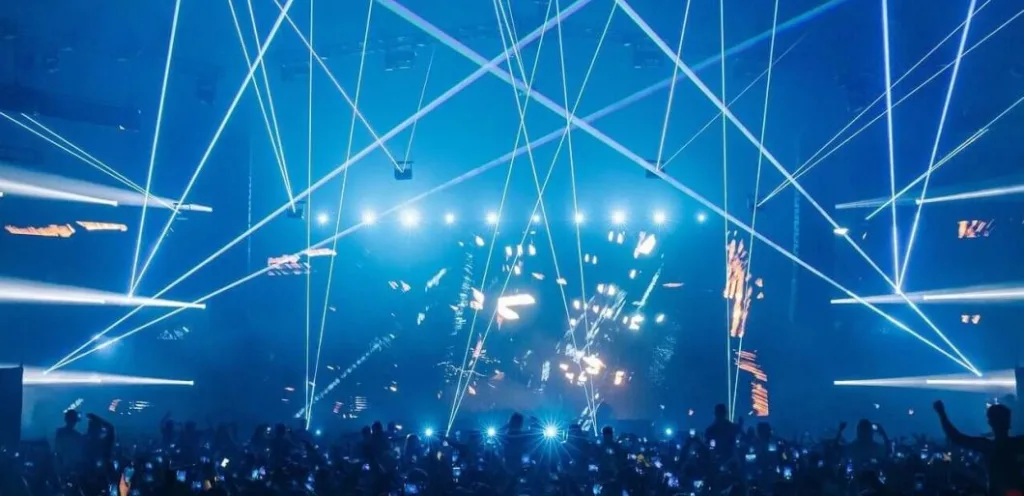
Attending a hard techno live set is an unforgettable experience:
Immersive Atmosphere
- Sound Systems: High-quality setups deliver deep bass and crisp highs.
- Lighting and Visuals: Strobe lights, lasers, and minimalistic visuals enhance the mood.
Physical and Emotional Impact
- Energy Release: The music encourages uninhibited dancing and movement.
- Collective Euphoria: Shared experiences amplify emotions among the crowd.
“The first time I attended a hard techno event, I felt a surge of energy unlike anything before. The music, the people—it was pure catharsis.”
— Alex, a Dutch hard techno enthusiast
DJ Interaction
- Dynamic Mixing: DJs often perform long sets, seamlessly blending tracks.
- Crowd Connection: Artists feed off the crowd’s energy, creating a feedback loop of intensity.
Hard Techno’s Influence on Modern Electronic Music
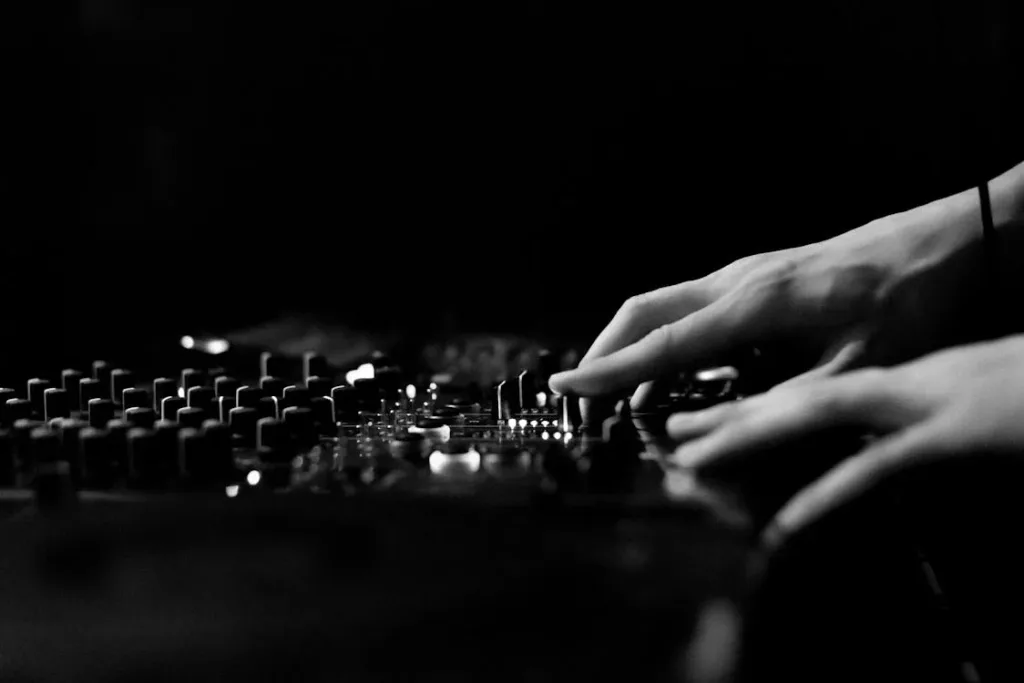
Hard techno has left an indelible mark on the electronic music landscape:
Cross-Genre Inspiration
- Techno Producers: Incorporate hard techno elements to add intensity to their tracks.
- Hybrid Genres: Blends of hard techno with acid, trance, and even metal have emerged.
Resurgence in Popularity
- Post-Pandemic Boom: An increased desire for high-energy music has brought hard techno to new audiences.
- Social Media Platforms: TikTok and Instagram have helped popularize tracks and artists.
Technological Advancements
- Production Tools: Modern software allows for more complex and aggressive sound design.
- Live Performances: Enhanced equipment enables more immersive and dynamic sets.
How to Dive into Hard Techno
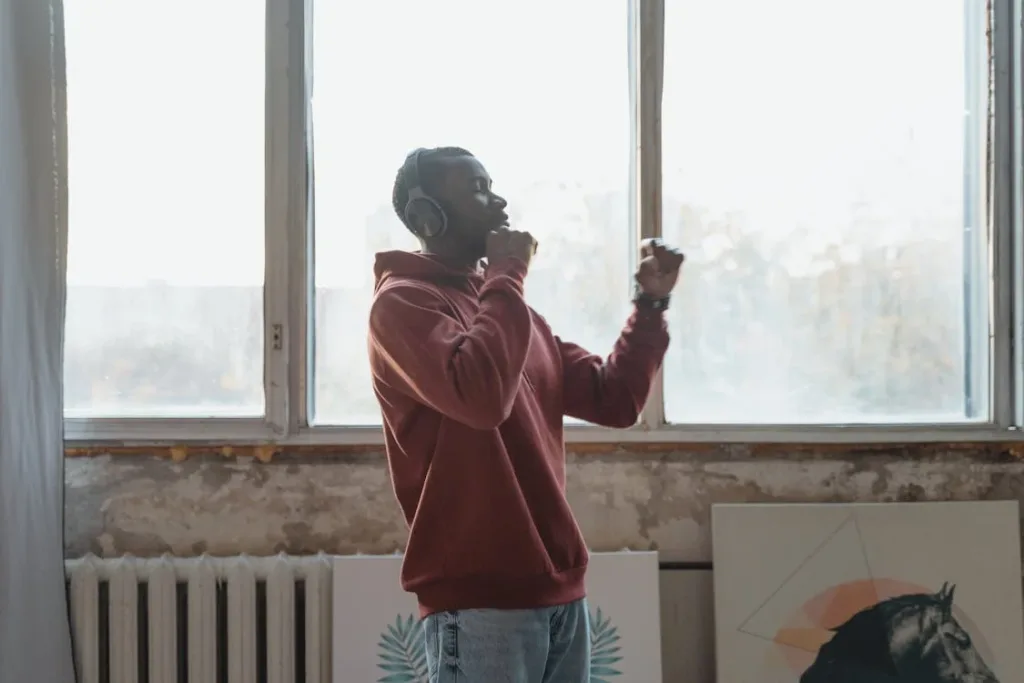
Ready to explore more in the world of What is Hard Techno? Here’s how to get started:
Listen to Iconic Tracks
- “Deathvox” by Paula Temple
- “Purple Widow” by Nico Moreno
- “Daydream” by I Hate Models
Explore Live Sets
- Platforms: Check out SoundCloud, YouTube, and HardTechnoLiveSets.com for live recordings.
- Artists to Watch: Amelie Lens, Dax J, Rebekah.
Join the Community
- Online Forums: Engage with fans on Reddit’s r/Techno or dedicated hard techno groups. For questions like What is Hard Techno?
- Social Media: Follow artists and labels on Instagram and Facebook for updates and for questions like What is Hard Techno?
Attend Events
- Local Clubs: Discover venues in your area that host techno nights.
- Festivals: Plan a trip to a renowned hard techno festival for an immersive experience. Like Verknipt festivals or Unreal Germany Festivals.
Connect with Fans
- Share Your Journey: Post about your discoveries and experiences.
- Support Artists: Purchase music and merchandise to support the scene.
Recap of “What is Hard Techno?”
What is Hard Techno? It’s a unique style, powerful subgenre of electronic music that captures the raw, unfiltered energy of techno and amplifies it to new heights. With high BPMs, aggressive sounds, and an immersive atmosphere, hard techno offers an experience like no other for those who crave intensity and aren’t afraid to lose themselves in the music.
Whether you’re a seasoned fan or a curious newcomer, hard techno invites you to dive in and let yourself be carried away by its relentless beats. Ready to immerse yourself in the raw, relentless energy of hard techno? Explore more hard techno live sets at HardtechnoLivesets.com to get an authentic taste of the genre!
FAQ About “What is Hard Techno?”
What is Hard Techno?
Hard Techno is a subgenre of techno characterized by fast tempos (140-160 BPM) and industrial, raw sounds. It emphasizes aggressive beats, distorted basslines, and relentless energy, making it a favorite in underground scenes and high-energy festivals.
What is considered Hard Techno?
Hard Techno is considered a subgenre of techno defined by fast tempos, raw industrial sounds, and aggressive beats. It emphasizes relentless energy, often with distorted basslines and minimal melodies, making it popular in underground rave scenes and high-energy festivals.
How did Hard Techno originate?
Hard Techno originated in the 1990s in Europe, particularly in Germany and Belgium. It evolved from underground rave culture and was influenced by industrial music, embracing a raw and rebellious sound.
What does Hard Techno sound like?
Hard Techno features pounding, repetitive beats with a focus on industrial-inspired soundscapes. It often includes distorted bass, fast tempos, and minimal or no melodies, creating an intense, driving rhythm ideal for dancefloor energy.
What are the main characteristics of Hard Techno?
Hard Techno is defined by:
– Fast tempos (140-160 BPM or higher).
– Aggressive, industrial-inspired beats.
– Minimal melodies with a focus on raw energy.
– Repetitive rhythms designed for high-intensity dancing.How is Hard Techno different from traditional techno?
Hard Techno is faster, more aggressive, and industrial compared to traditional techno. While traditional techno focuses on groove and hypnotic rhythms, Hard Techno emphasizes raw, high-energy beats and harsher soundscapes.
Is Hard Techno the same as Hardcore or Hardstyle?
No, Hard Techno, Hardcore, and Hardstyle are distinct genres. Hard Techno is rooted in techno’s foundation, featuring industrial sounds and faster tempos. Hardcore and Hardstyle are separate styles, with Hardcore being more aggressive and Hardstyle incorporating melodic elements.
Who are some key artists in Hard Techno?
Notable Hard Techno artists include DYEN, Sara Landry, Klangkuenstler, I Hate Models and 999999999. These artists have pushed the genre forward with innovative productions and performances.
Why is Hard Techno popular?
Hard Techno is popular because of its intense energy, raw sound, and ability to create immersive dancefloor experiences. It appeals to fans who seek high-tempo, industrial-style music in both underground and festival settings.
Where is Hard Techno most popular?
Hard Techno has a strong presence in Europe, particularly in Germany, France, the Netherlands, and Belgium. It’s also gaining popularity in global festivals and underground scenes worldwide.
What is a Hard Techno personality?
A Hard Techno personality is often intense, energetic, and rebellious. Fans and artists of the genre embrace its raw, industrial sounds and fast-paced rhythms, thriving in high-energy environments and valuing creativity and non-conformity within electronic music culture.
Is Hard Techno real techno?
Yes, Hard Techno is a legitimate subgenre of techno. It builds on traditional techno’s foundation of looped beats and electronic rhythms but amplifies the intensity with faster tempos, industrial sounds, and raw energy.
What BPM is Hard Techno?
Hard Techno typically ranges from 140 to 160 BPM, with some subgenres like Schranz reaching even higher tempos. Its fast-paced beats and relentless energy are key characteristics, making it one of the most intense forms of techno.
When did Hard Techno start?
Hard Techno started in the early 1990s in Europe, particularly in Germany and Belgium. Emerging from the underground rave scene, it evolved as a faster, more aggressive offshoot of traditional techno, incorporating industrial and rave influences.
Stay Connected:
Stay updated with the latest in the hard techno scene by following us on social media to get Articles like “What is Hard Techno?”:
- Instagram:
- Facebook:
- Twitter:
Tags: #HardTechno #ElectronicMusic #TechnoCulture #LiveSets #UndergroundMusic #What is Hard Techno
Related Articles for “What is Hard Techno?“:
- Complete Number 1 Guide to Hard Techno Livesets
- The evolution of Hard Techno!
- Hard Techno Still Going Strong in 2024
- The Best Top 150 Hard Techno DJs
Subscribe!
Subscribe to our newsletter to get the latest hard techno livesets, artist news, and exclusive content like “What is Hard Techno?” delivered straight to your inbox.
Note: This article is regularly updated to provide you with the latest insights and developments in the Hard Techno scene. Last updated on [14-12-2024].
Note: All images used in “What is Hard Techno?” are for illustrative purposes.
Written by Hatelise, a passionate electronic music enthusiast and hard techno aficionado dedicated to sharing the energy and excitement of the scene.
Need more hard techno in your life? Check out our curated playlists and let the music speak for itself.